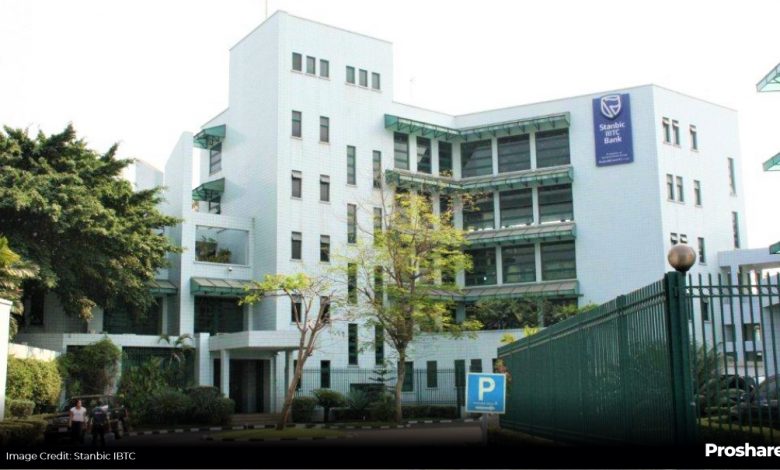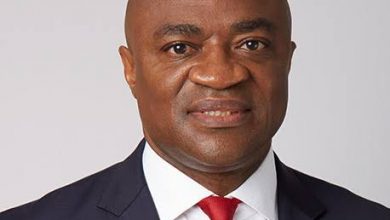CardinalStone: Stanbic IBTC Holdings Plc: Margin Strength and Capital Boost Support Outlook

Stanbic IBTC Holdings Plc’s (STANBIC) outlook remains strong, underpinned by sustained margin resilience, improved cost efficiency, and solid capital buffers that position it for measured loan expansion in the coming periods. With funding cost tailwinds expected to offset the impact of a softer rate environment, we forecast FY’25 Net Interest Margin (NIM) at 15.8% on our basis (7.5% under management’s approach), slightly above management’s revised 6.0%–7.0% guidance. The successful rights issue in Q1’25, which raised the equity base to N951.2 billion and lifted the Capital Adequacy Ratio (CAR) to 21.5%, provides significant capacity for balance sheet growth. Reflecting these positives, we revise our 12-month target price upward to N102.84 (from N75.17 previously). However, given the ticker’s notable price appreciation since our last publication, we downgrade our rating on the counter to a SELL.
“Positive Signals Prompt Upward Review in NIM Guidance”
Management’s deliberate strategy to deleverage interbank borrowings and reduce borrowings has begun to yield positive results, as shown in its H1’25 performance. In H1’25, interest expense declined 4.3% YoY to N68.8 billion. This moderation underpinned an 81.3% YoY surge in NII to N316.0 billion, while Net Interest Margin (NIM) expanded by 501bps YoY to 16.6%. Interestingly, the YoY moderation in interest expense in H1’25 was achieved despite the N382.4 billion increase in customer deposits in Q2’25, largely from its Corporate and Investment Banking (CIB) segment. Positively, STANBIC’s interest expense-to-interest income remains well below its five-year average of 29.3%, highlighting improved cost efficiency.
With reported NIM at 8.6% by mid-year and already above the full-year guidance range, management has revised its FY’25 NIM guidance upward to 6.0% – 7.0% (from the initial 5.0% – 6.0%), citing confidence that funding cost tailwinds will offset the impact of a softer rate environment and modest loan growth.
On our basis, which differs from management’s methodology, we project FY’25 NIM at 15.8%, lower than the 16.6% recorded in H1’25 as we anticipate slower income generation in the latter part of the year, driven by reduced market yields following the rate cut and the counteracting effect of a larger interest-earning asset base on our computation. However, when applying our forecasted net interest income under management’s approach, the implied NIM prints at 7.5%, slightly ahead of management’s revised guidance. While the rate cut is negative for income accretion, it is positive for Interest Bearing Liabilities (IBL) through immediate deposit repricing.
“Rising ECL Amid Manufacturing Portfolio Restructuring”
Although STANBIC reported muted gross loan growth of just +0.03% YtD in H1’25 and was unaffected by the CBN’s directive on banks with forbearance loans, its loan portfolio still reflected notable developments, including restructurings, reclassifications, and a review of ECL coverage adequacy. The flat loan growth largely mirrored maturities and repayments on trade-related exposures as the CIB was the only segment to record an expansion in gross loans.
Restructurings were significant, specifically in the manufacturing sector, which has been STANBIC’s largest exposure—averaging 29.6% of the loan portfolio since FY’20. A total of 4.8% of STANBIC’s loan portfolio (N118.2 billion) was restructured mainly due to a single manufacturing borrower who accounted for N70.7 billion of this amount, which is higher than the total restructurings completed in FY’24 (N70.4 billion).
On reclassifications, two major oil and gas downstream facilities were downgraded from Stage 2 to Stage 3 after a marked deterioration in credit quality. This drove a sharp rise in ECL provisioning in Q2’25 (+N15.8 billion QoQ), compared with Q1’25 (+N4.1 billion QoQ), lifting the NPL coverage ratio by 4.3ppts YtD to 122.5%. Oil and gas downstream exposures now account for 24.9% of NPLs, down from 26.0% in FY’24 but still above 7.0% in FY’23. Beyond oil and gas, NPL growth was driven mainly by agriculture exposures, despite the sector’s 2.8% YoY Gross Domestic Product (GDP) expansion.
Prompted by H1 developments and aligned with management’s decision to halve loan growth guidance from an average of 17.5% YoY to 7.5% YoY for FY’25, we have revised our loan growth projection downward to 4.5% (from 10.0% previously). This reflects a more cautious stance despite increasingly robust capital buffers (CAR: 21.5%). We expect NPLs to remain at current levels for FY’25, barring any significant reclassification or write-offs.
“Shareholders’ Equity Set to Cross the N1.0 trillion Mark”
Following the completion of its rights issue program in Q1’25, STANBIC has successfully met its revised minimum capital requirement, becoming one of the few Tier 2 banks to do so. This achievement has increased the group’s equity base to N941.7 billion, compared to N661.9 billion in FY’24. In addition to meeting regulatory compliance, the capital raise has lifted the Capital Adequacy Ratio (CAR) to 21.5%, providing significant room for expansion in risk-weighted assets. Notably, N116.6 billion, which constitutes 80.0% of the net proceeds from the rights issue program, was allocated for lending to clients in key business segments.
“Valuation summary”
Having made adjustments to our forecasts, we revise our 12-month Target Price (“TP”) higher to N102.84 (formerly N75.17). This upward revision also reflects a rerating of the stock in line with its Middle East and African (MEA) peers, following an increase in the peer group’s mean P/B multiple, which lifted the stock’s relative valuation benchmark.
Furthermore, this adjustment also factors in the growing attention of foreign investors toward Nigerian equities and the higher dividend expectations over our forecast horizon. It is also noteworthy that the recent decline in fixed-income yields, which resulted in an adjustment in our risk-free rate assumption, contributed positively to the ticker’s valuation.
The revised TP implies an exit P/B of 1.32x (vs. the 5-year average of 1.37x and the EMEA average of 1.78x). However, we downgrade our recommendation on the ticker to SELL, given its notable price appreciation (+45.0%) since our last publication. The stock now trades at a P/B of 1.82x, well above its 5-year average of 1.37x.




